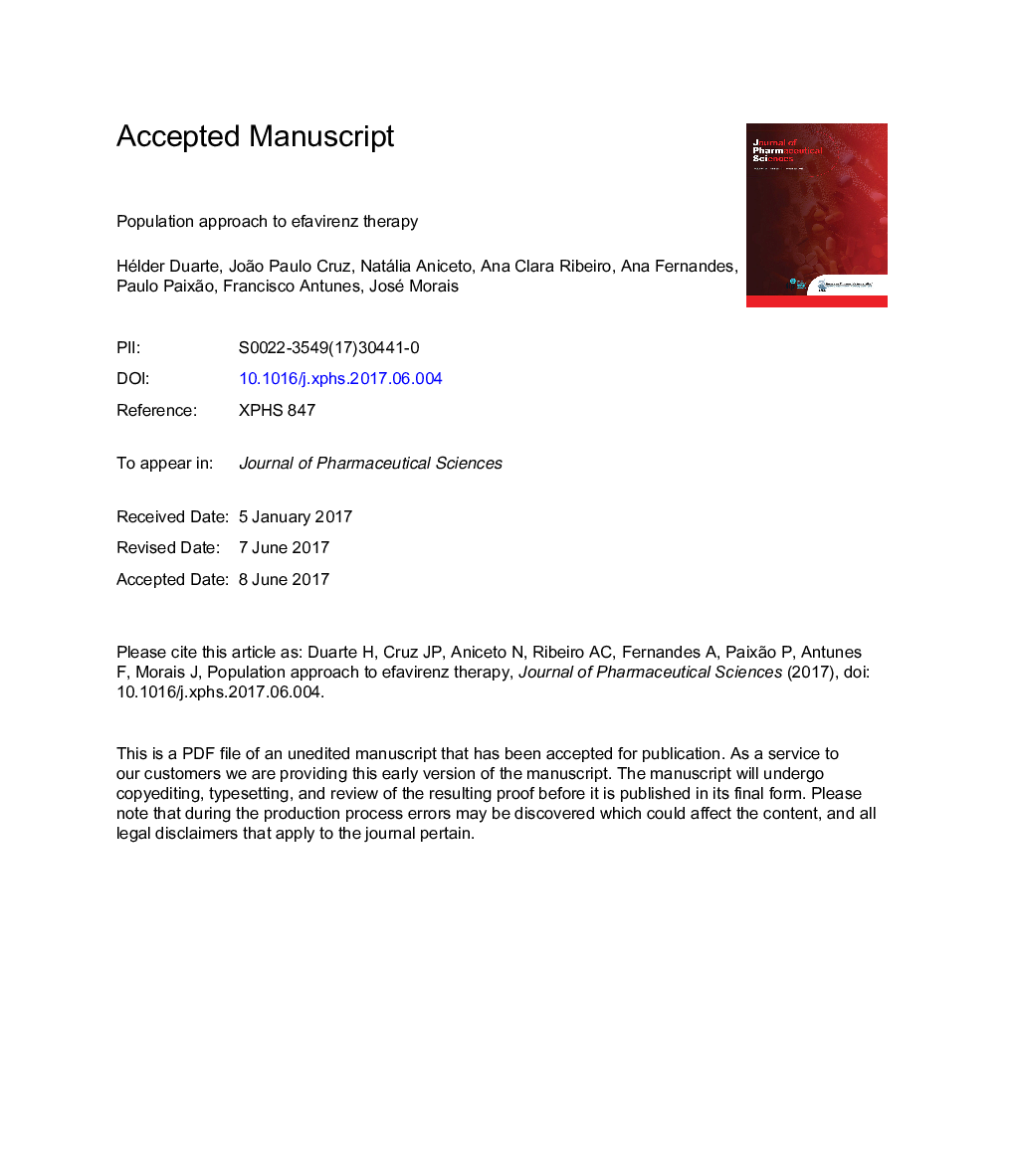| Article ID | Journal | Published Year | Pages | File Type |
|---|---|---|---|---|
| 8513836 | Journal of Pharmaceutical Sciences | 2017 | 25 Pages |
Abstract
Efavirenz (EFV) is a nonnucleoside reverse transcriptase inhibitor commonly used as first-line therapy in the treatment of human immunodeficiency virus (HIV), with a narrow therapeutic range and a high between-subject variability which can lead to central nervous system toxicity or therapeutic failure. To characterize the sources of variability and better predict EFV steady-state plasma concentrations, a population pharmacokinetic model was developed from 96 HIV-positive individuals, using a nonlinear mixed-effect method with Monolix® software. A one-compartment with first-order absorption and elimination model adequately described the data. To explain between-subject variability, demographic characteristics, biochemical parameters, hepatitis C virus-HIV coinfection, and genetic polymorphisms were tested. A combination of the single-nucleotide polymorphisms rs2279343 and rs3745274, both in the CYP2B6 gene, were the only covariates influencing clearance, included in the final model. Oral clearance was estimated to be 19.6 L/h, 14.15 L/h, and 6.08 L/h for wild-type, heterozygous mutated and homozygous mutated individuals, respectively. These results are in accordance with the current knowledge of EFV metabolism and also suggest that in homozygous mutated individuals, a dose adjustment is necessary. Hepatitis C virus-HIV coinfection does not seem to be a predictive indicator of EFV pharmacokinetic disposition.
Related Topics
Health Sciences
Pharmacology, Toxicology and Pharmaceutical Science
Drug Discovery
Authors
Hélder Duarte, João Paulo Cruz, Natália Aniceto, Ana Clara Ribeiro, Ana Fernandes, Paulo Paixão, Francisco Antunes, José Morais,
